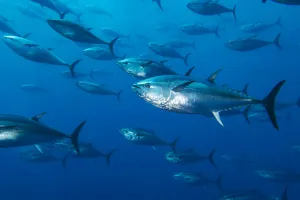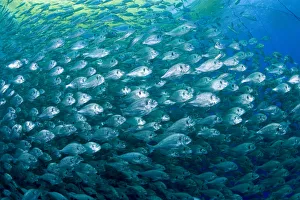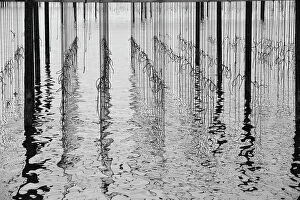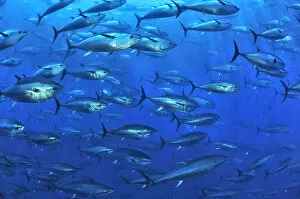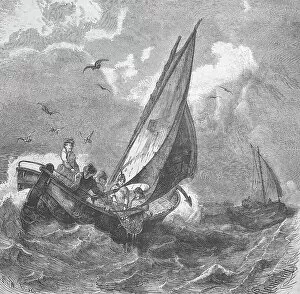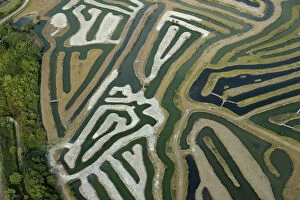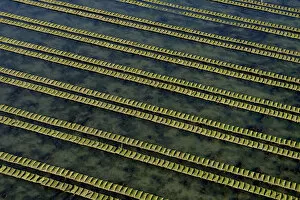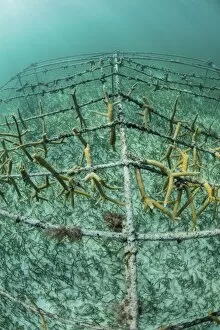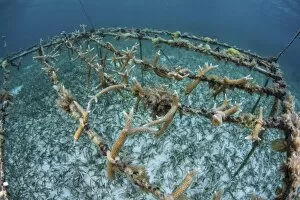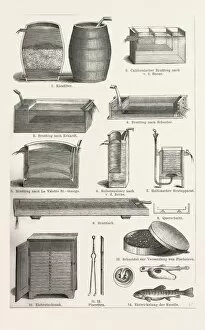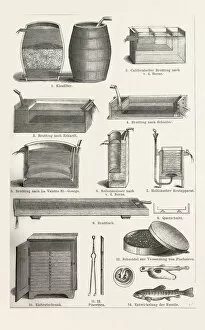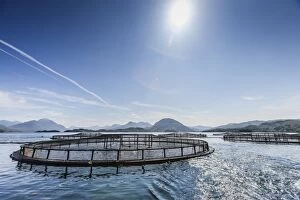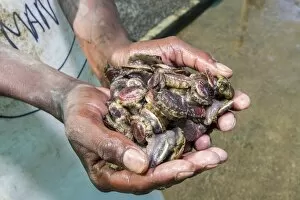Aquafarming Collection
Aquafarming, also known as aquaculture, is a practice that has been utilized for centuries to meet the growing demand for seafood
All Professionally Made to Order for Quick Shipping
Aquafarming, also known as aquaculture, is a practice that has been utilized for centuries to meet the growing demand for seafood. It involves the cultivation of various marine organisms in controlled environments such as pens, sea cages, and fish farms. One example is seen in the school of large Atlantic bluefin tuna captive in a growing pen. These magnificent creatures are carefully bred and raised to ensure their survival and provide a sustainable source of this prized delicacy. In another instance, thousands of Gilt-head bream can be found inside a sea cage specifically designed for aquaculture. This method allows for efficient growth and harvest while minimizing environmental impact. Looking back at history, an intriguing photo or illustration from 1892 showcases fishermen catching oysters off Helgoland, Germany. Although technology has evolved since then, oyster farming remains an important aspect today. Aerial views offer fascinating insights into modern fish farms like the one captured over La Guittiere Marsh in South Vendee, France. These expansive facilities house numerous nets containing around 1000 Atlantic bluefin tuna each – a testament to the scale at which aquafarming operates. Not only does aquafarming focus on finfish production but it also supports other aquatic life forms. A great white egret skillfully catches cyprionid fish or carp within a fish farm - demonstrating how these environments can create diverse ecosystems beneficial to both humans and wildlife alike. Oyster farming takes on yet another form with rows upon rows of racks used during high tide off Isle de Re in Charente-Maritime. This innovative technique ensures optimal conditions for oyster growth while making efficient use of space. Moving away from traditional practices towards conservation efforts, fast-growing corals are being cultivated in the Caribbean Sea. By nurturing these delicate organisms under controlled conditions, scientists aim to restore damaged coral reefs and preserve biodiversity underwater.

